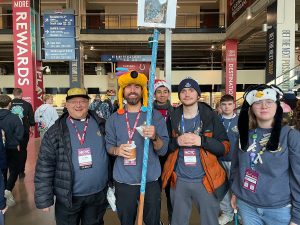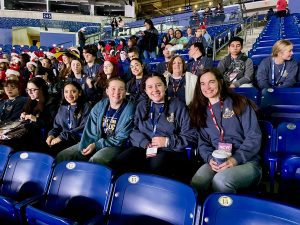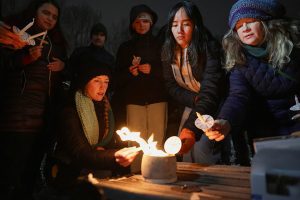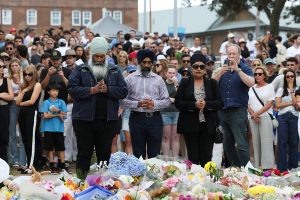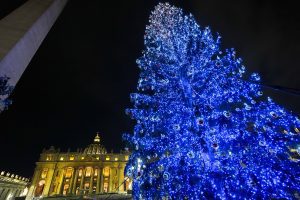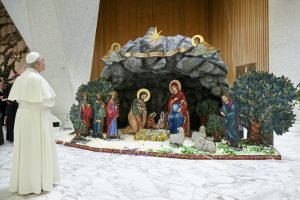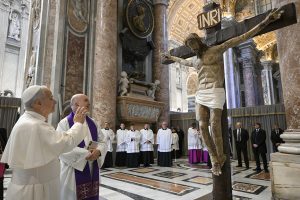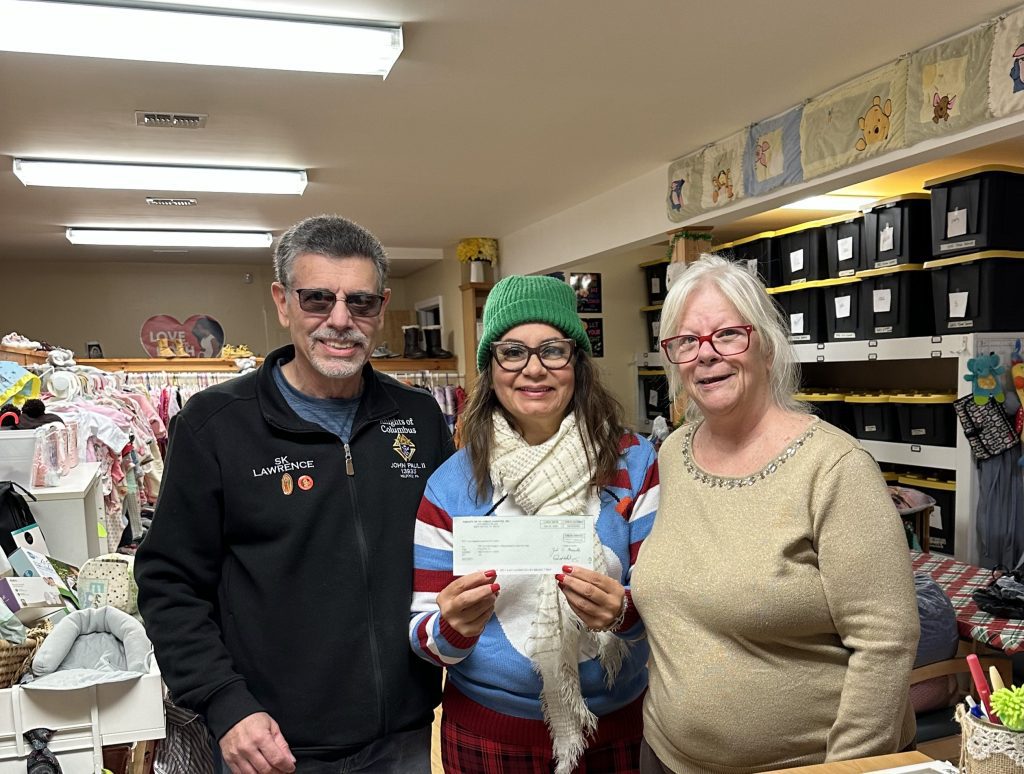SCRANTON – Surrounded by family, friends, and fellow parishioners who supported them for five years of formation, eight men were ordained to the Permanent Diaconate for the Diocese of Scranton during a joyful Mass on Saturday, Nov. 29, 2025, at the Cathedral of Saint Peter.
The day marked a profound moment in the life of the Church of Scranton, and a milestone for the newly ordained who will now serve the People of God in the ministries of Word, Liturgy, and Charity.
The Most Rev. Joseph C. Bambera, Bishop of Scranton, served as principal celebrant and homilist for the Mass, which drew clergy from throughout the Diocese.
In a homily rooted in the Gospel of Matthew, Bishop Bambera reminded the men that ordained ministry in the Church is not a place of privilege, but a call to radical service.
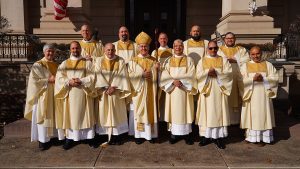
“To be a disciple of Jesus means to put ourselves in the humble, demanding role of servant to others, to intentionally seek the happiness and fulfillment of those entrusted to our care, regardless of the cost to ourselves,” Bishop Bambera said. “There is simply no other way to understand and manifest authentic ministry in the Church.”
Quoting Pope Leo XIV, the Bishop emphasized that perfection is not the requirement for ministry – credibility in witness is.
“God has called you to a vital ministry in service of the Gospel. Set aside your fears. Embrace your call with deep trust in Jesus’ promise to walk with you always,” he added. “Live the truth of the Gospel that is rooted in the person of Jesus. Follow always His example of selfless love and mercy.”
The men ordained included Fernando B. Alves, Francisco Castelan, Michaelangelo J. Colaneri, Frank A. Fanelli, Joel Marte, Jorge A. Roca, Rafael Sanchez Velasquez, and Christian D. Saunders.
The Ordination Mass featured the rich and ancient rituals of the Rite of Ordination of Deacons.
During the Election of Candidates, each man was called by name and presented to the Bishop, who formally affirmed their readiness for Ordination.
In the Promise of the Elect, the candidates declared their intention to be ordained and to undertake the duties of the diaconate.
As the cantor of the Mass chanted the Litany of Supplication, the eight candidates prostrated themselves before the altar – a powerful gesture of surrender and vulnerability.
For many ordinands, it was the most moving moment of the day.
“You put yourself in the absolute most vulnerable position and completely and totally turn everything that you are over to Him,” newly ordained Deacon Michaelangelo Colaneri said. “It is symbolic that you are dying to yourself and rising to Christ. When you are really in that moment, the symbolism takes true effect.”
The heart of the Sacramental ritual came with the Laying on of Hands and Prayer of Ordination, as Bishop Bambera conferred the Sacrament upon each man.
Following the prayer, the men were vested with the stole and dalmatic, handed the Book of the Gospels, and welcomed with the fraternal kiss by the attending deacons – a sign of belonging to the order.
Immediately following Mass, the emotional impact of the day was evident. As the newly ordained deacons greeted family and friends, many shed a few tears.
“It’s such a heart warming feeling to see friends and family that travelled for hours to come here. It’s such a moving experience,” Colaneri added. “This was beyond compare to anything I’ve ever had in my entire life.”
For Deacon Fernando Alves, who has been assigned to Saint Luke Parish in Stroudsburg, formation was both challenging and transformative.
“No one comes in thinking they know it all,” he said. “Most of us know that we’re not worthy to be here. We know we’re here because of what others have helped us with.”
But the journey was never solitary. Alves said he became close with his fellow deacons undergoing formation.
“We challenged each other and pushed each other forward,” Alves explained.
Deacon Joel Marte, one of three men who is being assigned to Saint Matthew Parish in East Stroudsburg, said the moment of vesting was unforgettable.
“When you get those garments, you see them and hear about them, but until you’re getting vested, that is when everything came together,” Marte shared. “That is when the tears came down.”
He, too, spoke of the deep bonds forged among the eight candidates.
“We have all become very close. We’ve shared our family, we share stories, faith, our backgrounds,” Marte said. “It is a bond I can’t explain.”

